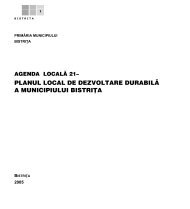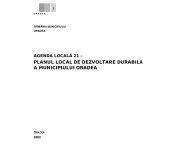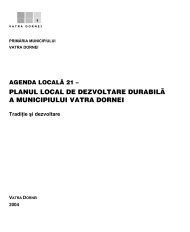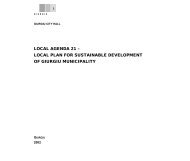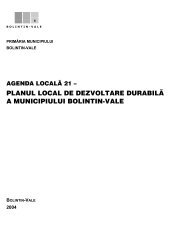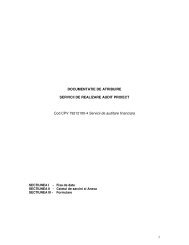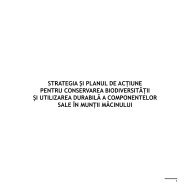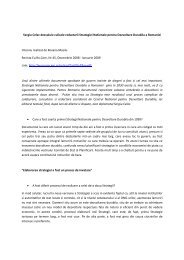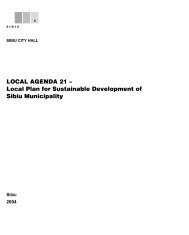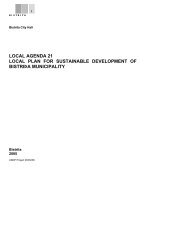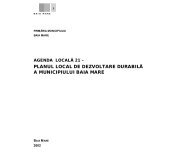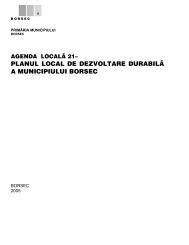English Version - United Nations Development Programme Romania
English Version - United Nations Development Programme Romania
English Version - United Nations Development Programme Romania
Create successful ePaper yourself
Turn your PDF publications into a flip-book with our unique Google optimized e-Paper software.
eveals that neither an acceptable standard of living (food, shelter, drinking water), nor access to<br />
health services, are ensured. The standard of living, assessed in terms of GDP per capita, affects the<br />
main indicators referring to the state of public health and that of the medical personnel available to<br />
the population.<br />
The results of the estimate regarding the health burden show that a lot of potential life years are<br />
lost, and their number is increasing significantly if we also consider the consecutive appearance of<br />
illnesses.<br />
To resolve the current critical situation, a new approach at the national level is needed. This fact<br />
requires the creation of a strategy with precise aims, in which health must be perceived in a new light, as<br />
it is a significant factor for almost every sector of society, not only for "the health sector".<br />
2.2 Education<br />
Education and the enhancement of human capital represent a major dimension, and at the same<br />
time a solid support in the process of placing <strong>Romania</strong> on the path towards sustainable development.<br />
Investing in education and continuous professional training of human resources, together with health and<br />
research, is a central condition for overcoming the economic and social decline of the country. In the<br />
long term, it will prove to be the most beneficial investment, as man's intellectual and creativeparticipative<br />
potential is virtually unlimited.<br />
For various reasons, a phenomenon which can be described as decapitalisation of human capital<br />
occurred during the transitional period, although transition itself is a shock learning experience.<br />
The years 1994 and 1995 practically marked the beginning of a global reform of secondary and<br />
university education. The reform was aimed at making the <strong>Romania</strong>n educational system, compatible<br />
with those of the developed countries in terms of organisation and performance; modernising the<br />
structures, content, and techniques of the education process; improving admittance procedures,<br />
evaluation, certification and recognition of studies; increasing institutional capability.<br />
The Education Law (no 84/1995) declared education a national priority.<br />
Educational reform set several targets for 1998 with a view to promoting more fundamental<br />
changes:<br />
1. Curricular reform and harmonisation with the established European standards;<br />
2. Transformation of education from a predominantly reproductive system to one centred around<br />
problem solving;<br />
3. Creation of a new network between schools, high schools, and universities on the one hand, and the<br />
economic, administrative, and cultural environment on the other;<br />
4. Improvement of infrastructure and introduction of electronic communications systems;<br />
5. Reform of school and academic management by de-centralising and granting institutional autonomy;<br />
6. Transfer to advanced forms of international co-operation.<br />
Actually, due mainly to the lack of resources, which in turn is caused by the austerity of the<br />
national budget, education and professional training continue to be affected by serious problems, with<br />
long term negative consequences which also threaten the projects of sustainable development.<br />
The average schooling period in years - according to the 1992 census - was 8.3 years for the whole<br />
population and 7.7 years for women.<br />
The "school life expectancy" in <strong>Romania</strong> was approximately 10 years in the period 1993-1997, whilst<br />
in E.U. countries this was between 13-15 years, and in some countries it approached 16 years.<br />
The degree of literacy of the <strong>Romania</strong>n adult population, whilst oscillating between 96-97% in 1996-<br />
1997, is also lower than in the E.U. countries, where it is 98-99%.<br />
The percentage of 7 to 14 year olds not included in compulsory (primary and secondary)<br />
education in 1997 was 5%, less than in 1991, when it was 9.5%, but this is still an unsatisfactory<br />
value.<br />
The gross rate of enrolment in education is variable, depending on the type of educational<br />
institution and also varying over any one school year.<br />
The motivation for attending higher level secondary education is decreasing, from 90.7% in 1990, to<br />
68.6% in 1997, while the average rate of enrolment at all education levels has remained relatively<br />
constant (62.9% in 1997, compared to 62.4% in 1990).<br />
Demand for places in university education is growing: whereas in 1990 the gross rate of enrolment in<br />
higher education of 10.6% was amongst the lowest in Europe, in 1997 it increased to almost 23%,<br />
remaining, nevertheless, below that of developed countries (30-40% or more).<br />
12



